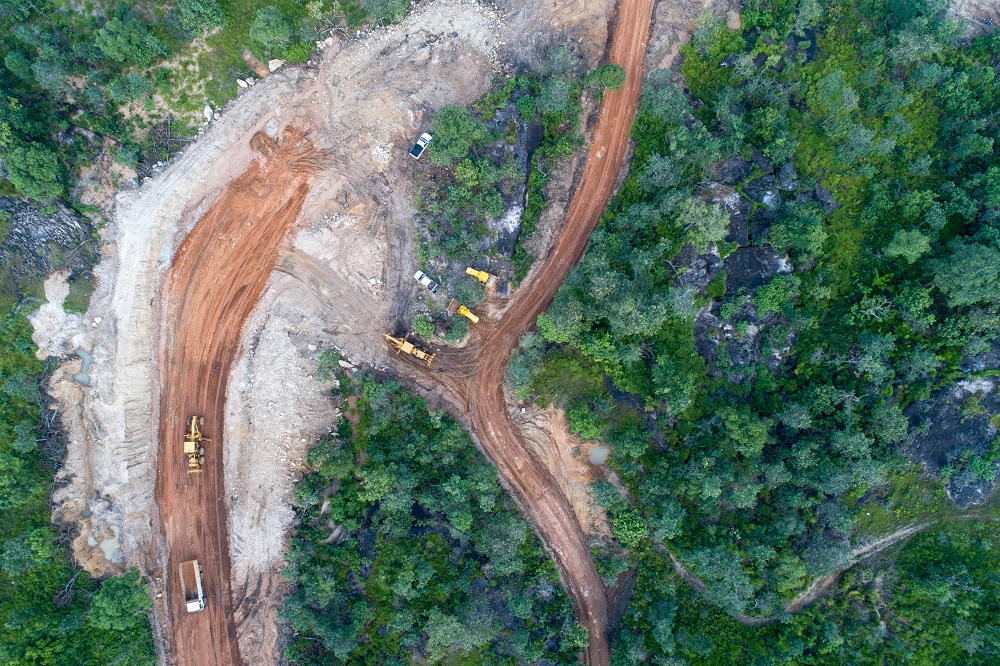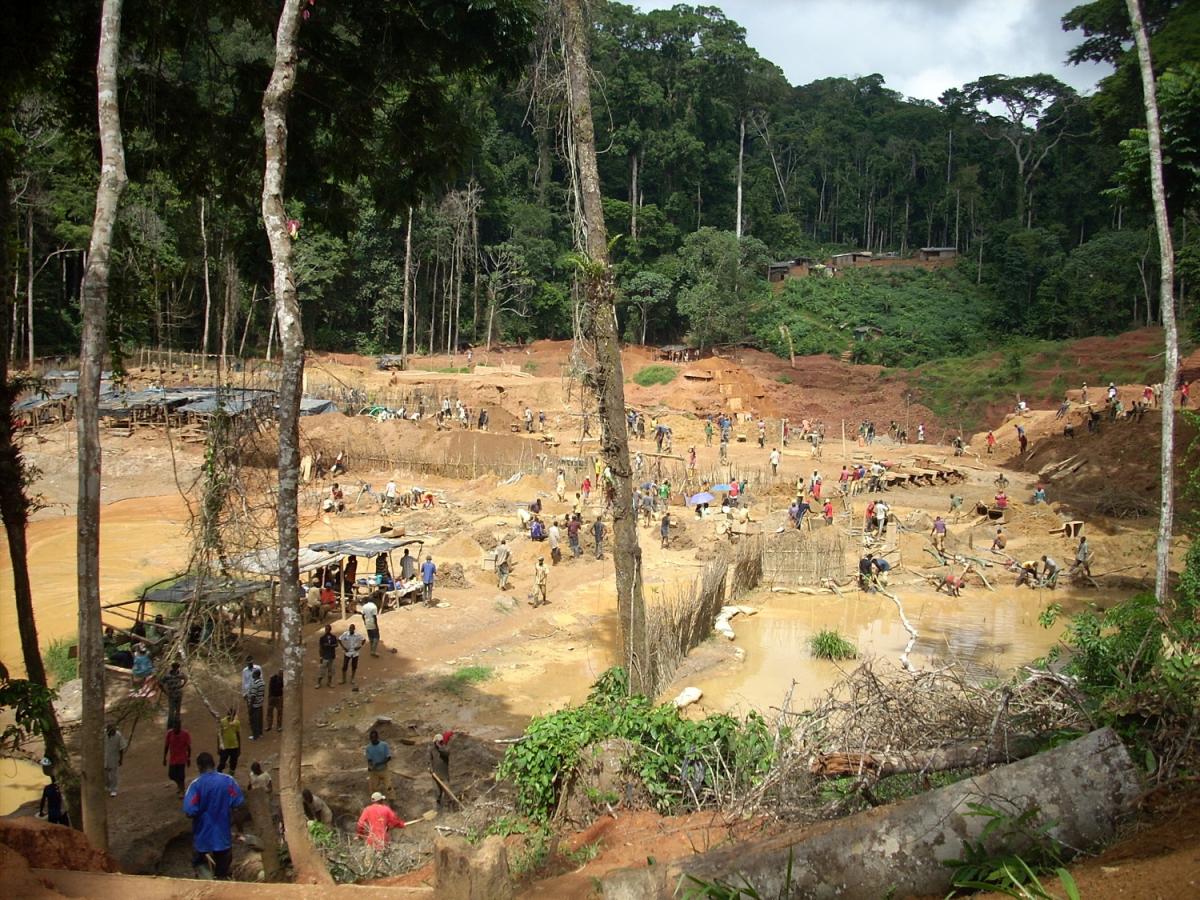
A low-carbon future must protect the world’s forests

The shift to a low-carbon future that includes clean technology such as solar panels, wind turbines, electric vehicles and batteries will require a lot of minerals. In fact, experts predict that between now and 2050 we will need more minerals than have been produced over the past 100 years. This mineral-intensive future has implications for our forests, vital to mitigate global warming. A climate-smart mining approach that protects the world’s forests is essential to reduce carbon emissions and fight climate change. Currently about 1,500 large-scale mines in the world are in tropical forests and a further 1,800 are under development or currently non-operational. More than half of these large-scale forest mines are in low- or lower-middle-income countries.
Forests provide an important carbon sink for mitigating climate change. According to the World Resources Institute, if tropical forests combined were a country, deforestation would rank third in carbon dioxide–equivalent emissions, behind China and the United States. Generically speaking, forest loss is driven by economic activity, mainly commercial and subsistence agriculture. Yet, mining plays an important, though less understood role, accounting for an estimated 7 percent of total forest loss. As the future of our planet hinges on tenths of degrees Celsius, 7 percent may well make the difference.
At a national level, mining is contributing to emissions from forest loss in numerous countries and is a dominant cause of deforestation in some. For example, in Suriname, mining is responsible for 73 percent of total deforestation, with the majority attributed to artisanal and small-scale mining (ASM) for gold.
With so much at stake, the World Bank has developed what we call a forest-smart approach to mining – ensuring that this increased need for metals and minerals will not be at the expense of forests. Thus a Climate-Smart Mining approach also needs to be Forest-Smart. Three new reports released today offer solutions to address this challenge.

So, what mining takes place in forests? Many different minerals are mined in forests, with gold, iron ore, and copper most commonly mined by large-scale operators in forests. Bauxite, titanium, and nickel are the most reliant on forest-based mines, as the ores that contain them are mostly found in forest areas. All these minerals are crucial components of low-carbon technologies as well as for cell-phones and computers.
Importantly, it isn’t principally the mine itself that causes deforestation. Our research shows that a mine is often surrounded by large-scale forest losses in areas outside the mining permit area, with notable spikes in deforestation when the mines are first established. This forest loss is largely the result of new roads, railways, ports and other infrastructure built to transport extracted minerals. In addition, the development of large-scale mines in previously uninhabited or inaccessible areas attracts people looking for new economic opportunities. The settlements they establish drive forest loss due to firewood demand, wildlife poaching, agriculture expansion and ASM activities.
To address this deforestation, a forest-smart approach to mining requires strong governance to manage the development and impacts of the mining sector, protect forests on a landscape level, and recognize and protect local community tenure and rights. It also requires responsible corporate behaviour, empowered communities, and engaged civil society stakeholders.
With this in mind, we analyzed almost 30 case studies of both artisanal and small-scale mines as well as large-scale mining operations to identify best practices that can improve forest outcomes and bad practices to be avoided. The result is a large number of practical examples and a set of 14 forest-smart mining principles.
Based on our case studies, no single site, operation, company, or country is wholly forest-smart. Yet, our case studies also demonstrate that a variety of countries are implementing forest-smart practices and applying strong policies. One key finding of our work is that political will and coordination between government entities and other stakeholders is crucial for forest-smart outcomes.
In Madagascar, the establishment of coordination platforms between managers of a national park and local authorities helped to develop effective strategies to manage illegal artisanal mining in the park and improve agricultural practices to reduce pressure on forest.
In Ghana, a mining company included community stakeholders as partners in planning, decision making, and implementation to achieve positive outcomes for forests and communities. This ongoing consultation led to communities receiving long-term stakes in the work through secure forest plots. used for sustainably managed small-scale commercial production.
In Zambia, a mining company partnered with the Forestry Department and the Department of National Parks and Wildlife to manage a large forest landscape, including the West Lunga National Park, together with local communities to protect the forest landscape and prevent further deforestation.
Our analysis identified priority countries for applying the forest-smart principles, using the criteria of high forest cover, high economic dependence on mining, a high density of mines in forest areas, and significant greenhouse gas emissions from forest degradation. Countries identified include Guinea, Ecuador, the Democratic Republic of Congo (DRC), Zambia, and Indonesia, countries where the World Bank is active in both forest conservation and mineral sector governance, and thus well positioned to help bring together experts, governments, companies and communities to implement forest-smart mining approaches. By working together, we can utilize the raw materials needed for clean-energy technologies and conserve forests at the same time – protecting the world’s forests, reducing emissions and stepping up to the climate challenge.
This blog by Kirsten Hund and Erik Reed was originally published by The World Bank
For stories and updates on related activities, follow us on twitter and facebook, or subscribe to our mailing list for regular updates.
Last Updated : 06-16-2024








